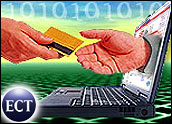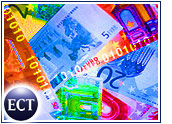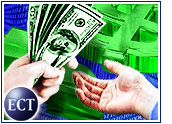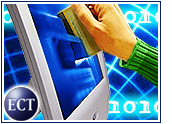
With approximately 90 percent of online shopping transactions stilloccurring via credit card, any attempts by the e-commerce industry tocapitalize on new electronic payment innovations might seem fruitless.
Yet, seemingly every week, a new payment method arrives on the online shopping scene.
“There has been a nearly unlimited number of payment options for consumersto adopt, with virtually no adoptions,” James Van Dyke, research directorfor Jupiter Media Metrix (Nasdaq: JMXI), told the E-Commerce Times. “You really have to look outside of America to find any adoptions other than credit and debit cards.”
The industry’s efforts resemble Wright Brothers-era attempts to build a functioning airplane. Somehow, someway, e-commerce is determined to get a new electronic payment system off the ground. So despite infrequent success, the new ideas keep coming.
Thumbs Up
Perhaps the innovation in the electronic payment arena that will havethe greatest impact on e-commerce will come from a concept pulled straightfrom James Bond movies.
Known as biometrics, these systems use the physical characteristics uniqueto each individual person, such as an eye or thumb scan, to grant — ordeny — access to computer resources.
For example, when you apply for a credit card, you could have a thumbprinttaken in person that is then encoded into your credit card information. Onceregistered this way, you could then use a computer scanner thatenables you to place your thumbprint down as payment while the chargeitself goes to the credit card, ensuring that the person trying to make atransaction is actually the authorized person.
Security Central
“It’s perfectly applicable for Internet commerce,” Yankee Group analystJason Briggs told the E-Commerce Times. “Itidentifies that you are who you are. Right now it’s in the initial stages ofrolling out but it needs bricks-and-mortars to accept it.”
The reason this concept could prove so successful for e-commerce is that itdirectly addresses the No. 1 issue confronting electronic payment systems.
“[Security issues] will still be an 800-pound gorilla for e-commerce foryears to come,” said Briggs. “In the end, electronic payments will have tobe handled where the payment information itself is secured by a third-partypayment provider outside the e-commerce site, where the information isredirected to a central payment site whose job it is to keep yourinformation very secure.”
Flop Sweat
Any optimism, however, has to be tempered by the fact that most attempts at alternative e-payment methods have flopped — including those put forth by major companies.
“E-wallets are going absolutely nowhere right now,” said Van Dyke. “The challenge with wallets is that in order for a company like Microsoft to make them work, they had to sign up all the merchants first and then all the consumers, and they could never do that successfully. Plus, they tried to extract too much of a fee.”
As an alternative, traditional credit-card issuers are just beginning tooffer consumers one-time usage numbers that work just like a credit-cardnumber, except for only one transaction — preventing them from being used againif hacked.
How Low?
Credit-card giants are still left with a critical choice, Van Dyke said.
“Are they willing to lower their fees and take an instant online marketshare, knowing that as soon as they lower their fees to people like PayPalcustomers they’d have to lower them everywhere online?” asked Van Dyke.
Decision time for these companies may be drawing near. Even Amazon has gotten into the payment act lately, offering customers their own Amazon charge accounts.
“Large merchants will follow Amazon’s example and start to open up internalaccounts (for their customers),” Van Dyke said.
Everyone’s Pal?
No matter how grim the odds seem, it takes only one success story to discourage others from giving up. In the alternative e-payment field, that success story is PayPal.
“PayPal has really shown itself to be a shining star of online payments interms of easing the process of transferring money,” Briggs said. “What they’ve done right is build aloyal user base based on online auctions, eBay especially, and made it veryconsumer friendly.”
Now that PayPal has built such a critical user mass, it has the leverage to approach larger e-tailers and offer a service that can potentially increase the conversions on their site.
Checking In
Van Dyke said that what is particularly interesting about PayPal’s growth isthat 50 percent of PayPal transactions are now funded by a direct transferfrom a checking account — a trend he says is likely to grow.
“Debit transfer capability will increase because merchants are motivated tomake it happen,” said Van Dyke. “Online merchants pay more in credit card interchange fees than offline due to a higher rate of online fraud. The 2 to 4 percent transaction fee they pay is more than their profitability right nowand if they can reduce that it’s a big target.”
Van Dyke sees two possibilities for PayPal.
“Person-to-person payments are here to stay,” Van Dyke said. “PayPal willeither get very large and experience the same growth outside of the auctionspace, or another brand we already know and trust — Visa, Mastercard — or anew brand spawned by multiple banks, will crush PayPal.”















































I do think the use of cellular phone for accepting charges will be the leader procedure in this field.
In Europe, Paybox.com backed by Deutsche Bank is leader right now. It’s alternative ?.
Having tech difficulties for merchants to run the system I developed a bridge over paybox’s gateway to ease the process.
Yes, Yq Zhang, this model is also perfect for China. Everywhere cellular phones are more popular than PC.
Only for accepting the payment, and not for the whole shopping process.
Also, it is combined with CC payment systems.
It can be tested at http://www.ibercobros.com/x4b.html
Regards from Spain
This is all good news. It is high time e-payments started taking effect. I’ve recently been introduced to a company called Payment Partners who are tackling the “international” electronic payment – I’m truly encouraged by what I read here and hope that the innovators can outrun the giants.
Transaction authenticity & access via a biometric algorithmic card with USB connectability to computer/mobile phone/EFTPOS requiring a match to a thumbprint reader is integratable into all existing financial systems & with tamperproof transaction logging for audit trail, obviates need for any third party involvement but provides transaction security, proof of origin & identification/details/source & legally enforceable liability for any “breaches”.
It is very timely to come across your article. I agree 100% with this opinion reflected in your article:
“You really have to look outside of America to find any adoptions other than credit and debit cards.”
Our company
http://www.eguo.com
is the largest e-commerce web site in China and I believe China would be one of the best places for these new payment technologies. There is practically no credit cards in use in China. From our experience, given choice of debit card and COD, 99% of people actually choose COD instead of debit card. I would be very interested to talk to anyone in applying their technology in China through our web. You can reach me at:
[email protected]
Inventing entirely new ways to pay which are alien to the ways consumers shop/pay offline will always be challenging. As Mr Briggs says, success is likely to come to those who develop trusted intermediary applications, taking the hassle/fear/uncertainty away from consumers. Many are nervous of commerce online as it is, without making them jump through even more hoops to complete what should be a simple transaction.